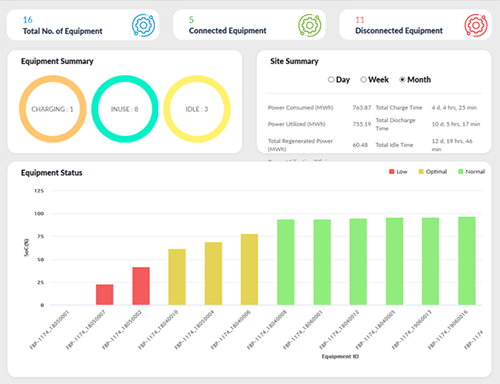Visit Green Cubes at MEDICA 2025, Dusseldorf, Germany November 17-20, 2025, Booth: Hall 12 / D58
utility
Utilities around the world are speeding up the replacement of fossil fuels with renewable energy. Battery storage can enhance power system flexibility and enable high levels of renewable energy integration. Battery energy storage systems (BESS) are playing a vital role in the future grid. BESS will play an increasingly pivotal role between green energy supplies and grid demands.
Batteries have considerable potential for application to grid-level energy storage systems because of their rapid response, modularization, and flexible installation. Among several battery technologies, Lithium-Ion batteries exhibit high energy efficiency, long cycle life, and relatively high energy density.
Green Cubes provides DC power systems into the Utility market to power multiple components of the grid system
- Utility Private Wireless/Wired Network Power
- Utility switchgear backup power
- Network Timekeeping Protocol (NTP) Servers
- AC to DC Rectification
- DC Power Distribution
- Remote 48V power system control
DC Power Systems
Green Cubes offers full system solutions for DC Power. Everything from AC rectification, Battery Charging, Lithium Ion batteries, and DC power distribution.
Green Cubes can design and manufacture custom batteries to meet the exacting requirements of BESS and the above-mentioned Applications of Utility-Scale Energy Storage. Green Cubes Battery Backup Units (BBUs) can also be used as potential building blocks of a BESS.
Green Cubes Lithium-Ion Systems provide the following benefits over other battery options:
- Higher depth of discharge Lithium-Ion batteries are deep cycle batteries, capable of Depth of Discharge (DoD) of 100%. Many Lead Acid batteries will be damaged if discharged below a DoD of 50%. This means you can use more of the energy that’s stored in a Lithium-Ion battery without having to charge it as often.
- Long lifespan Lithium-Ion batteries can last for more than 10 years, and 3500 cycles.
- Higher depth of discharge Because Lithium-Ion batteries have a high DoD and don’t need to be charged and recharged as often, they have a long lifespan. Depending on the chemistry selection, Lithium-Ion Batteries provide 5 to 10 times more cycles than Lead Acid Batteries.
- Higher energy density Lithium-Ion Batteries offer the highest energy density enabling them to store more energy without taking up as much space as a Lead Acid battery
- High efficiency Lithium-Ion batteries have a higher round-trip efficiency rating than other types of batteries. Efficiency refers to the amount of usable energy you get out of your battery compared to how much energy it took to store it. Lithium-Ion batteries have efficiencies between 90 and 98%. Lead acids typically run 80% round trip efficiency.
- Less maintenance Lithium-Ion batteries do not require topping off fluids, measuring specific gravity, or even onsite voltage measurements like lead acid batteries do.
- Safety & Reliability Green Cubes batteries are constructed from UL approved components. Voltage, current and temperature are continuously monitored with the help of a Battery Management System. Green Cubes designs, tests, and manufactures our own family of Battery Management Systems ensuring the safest batteries possible.
- Configurability Lithium-Ion batteries are also highly configurable into a variety of string sizes and battery racks to create a wide range of voltages, power ratings, or energy increments. This allows for application-specific designs that can range from a few kilowatts with a few minutes of storage, up to multi-megawatt solutions with hours of storage that may be used at a utility BESS.
- Power Conversion Lithium-Ion battery strings typically have a narrower voltage range requirement and higher minimum DC string voltage, which helps minimize the cost of the power-converter system relative to other battery technologies. Overall efficiency for an energy storage system (ESS) using lithium batteries will usually be higher than using flow or zinc-hybrid batteries
- Frequency Response and Regulation BESS can rapidly charge or discharge in a fraction of a second, faster than conventional thermal plants, making them a suitable resource for short-term reliability services, such as Primary Frequency Response (PFR) and Regulation.
Next Event
Latest News
Products
Customer Ratings and Reviews
Green Cubes is a great company, great engineers, great product. That’s been kind of my number one go to [lithium] battery.
President Industrial Power Company
The thing I like about Green Cubes is that they have other lines of business outside of material handling batteries, they have been in the lithium world for a long time. I can trust they will likely stay in business
VP Industrial Battery Company
Green Cubes [differentiates] on its capability to custom design for things like the hardware, the firmware, and inverters. They also have economies of scale because they make battery systems for things like forklifts.
VP Powered Cart OEM
I am doing some work with them right now. We’re learning their products, and looking at demos. They have good people. They seem like they know the technology well – they say they’re a technology company. I like that they’ve been in the lithium business a long time. I can trust they will likely stay in business.
Sales Manager Industrial Battery Company
Green Cubes Technology would be my go-to for lithium applications.
Branch Manager OEM
I’ve told my friends at Green Cubes, I don’t plan on going anywhere. I believe in loyalty.


